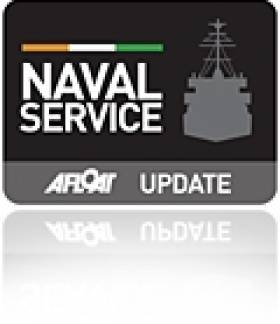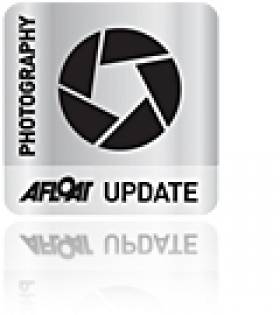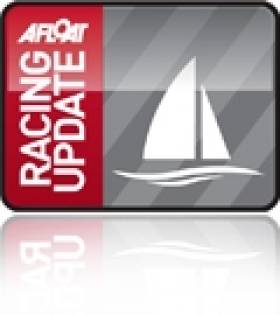Displaying items by tag: WIORA
Minister Killeen Visits L.E. Aoife In Kilrush
Minister for Defence, Mr. Tony Killeen, T.D. visited the L.E. Aoife which was in Kilrush, Co. Clare, on Saturday as part of the festivities surrounding the West of Ireland Offshore Racing Association's (WIORA) Yacht Racing Championship.
The event was hosted by the Royal Western Yacht Club of Ireland. Photos of the event on the Afloat gallery here.
Minister Killeen was welcomed on board by the Captain of the L.E. Aoife, Lieutenant Commander Michael Kennelly, who escorted the Minister on a tour of the ship and introduced the crew to him.
The ship, which was built at Verlome Shipyard near Cobh, recently celebrated 30 years service to the State and the Minister acknowledged the many achievements that the ship has had over the years.
Minister Killeen said "I am delighted to have the L.E. Aoife here in Kilrush and to have the opportunity to come on board and meet Lieutenant Commander Kennelly and the crew. I am very impressed to hear that the L.E Aoife has steamed a total of 525,000 nautical miles in her lifetime."
The Minister continued "I know that in 1985 the L.E. Aoife led the operation that found the flight recorder, the so called "black box" from the Air India disaster off the South West Coast. The 25th anniversary of this disaster was commemorated last week"
Concluding the Minister thanked the Captain and his crew for their excellent service and wished them continued success in the future. "I would like to thank the crew for their excellent service to their country. The contribution that they make in preventing illegal fishing and drug smuggling is invaluable to the State." the Minister said
More WIORA Action from the Shannon Estuary
A second batch of photos from a windy WIORA series on the Shannon Estuary have been uploaded to the gallery by photographer Gareth Craig. Click HERE to see the action from the Royal Western Yacht Club.
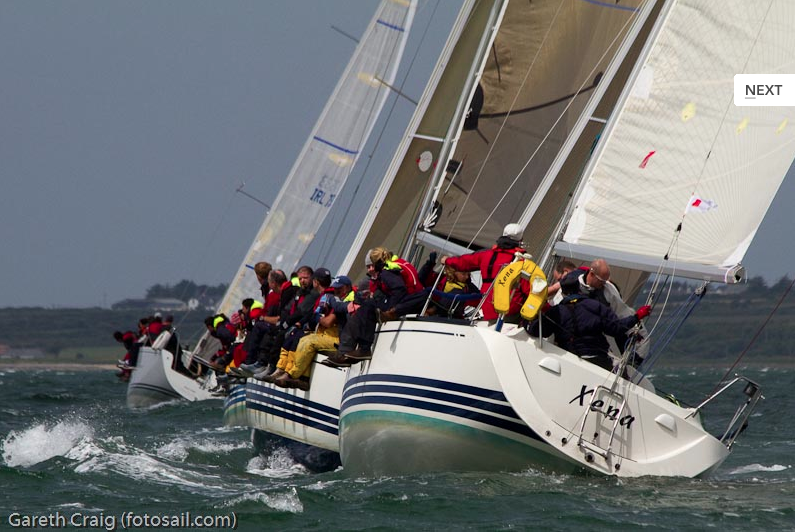
WIORA 2010 Regatta Photos from Kilrush here!
On the gallery are the latest images from Gareth Craig of Fotosail from the West of Ireland Offshore Racing Association (WIORA) Championships being sailed on the Shannon Estuary. Click HERE to go the gallery.
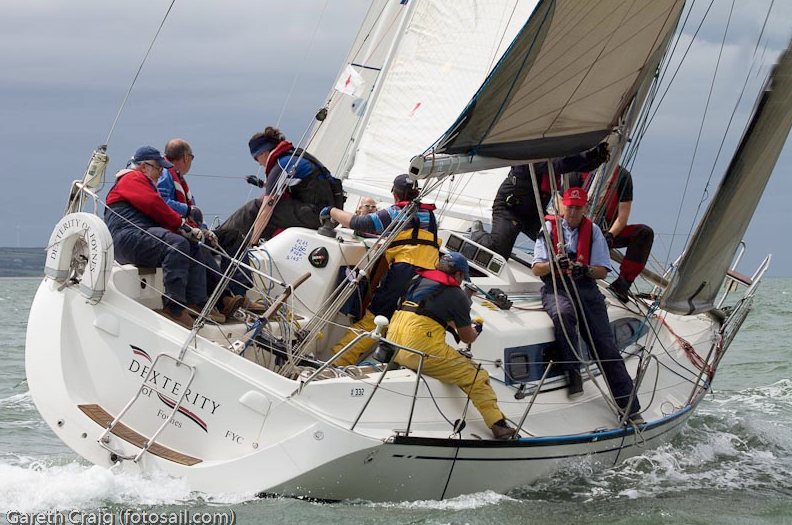
All Clare for WIORA Start
The annual WIORA championships kick off today in sunny conditions at Kilrush Creek marina, hosted by the Royal Western Yacht Club. PRO Alan Crosbie has a range of courses at his disposal, including a variation on the popular slalom course that rose to prominence at Cork Week 2008. Two races will be sailed per class per day.
Results and race reports will be posted on the RWYC website HERE, with Gareth Craig of Fotosail.com covering the photography.
West of Ireland Offshore Racing Association
The West of Ireland Offshore Racing Association (WIORA) is a membership-based association for promotion and development of cruiser racing and cruising on the West Coast of Ireland. For all the latest WIORA news click here.
The association provides and promotes an annual programme of events, Inshore, Offshore and Coastal for cruiser racing, working closely with the various clubs along the western seaboard.
We have an exciting programme of events for 2009 for you to look forward to which includes the Irish Cruiser Racing Association – National Cruiser Championships and the West Coast Championships being hosted by Tralee Bay Sailing Club in June and, if that wasn’t enough, the OneSails McWilliam West Coast Super League which has being growing in popularity and going from strength to strength.
Please feel free to contact a representative of the association for any further information, their contact details can be found here
Simon McGibney, Commodore
There is a space for Irish boating clubs and racing classes to use as their own bulletin board and forum for announcements and discussion. If you want to see a dedicated forum slot for your club or class, click here


























